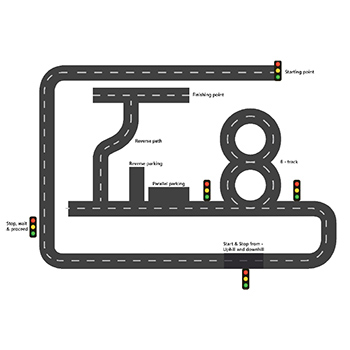The Indian automobile industry is one of the fastest-growing markets in the world. This steady growth has also meant more challenges for on-road safety, as there has been a steady increase over the last several years.of road accidents and fatalities have been reported over the past several years. Majority of These accidents were found to be caused by human errors or the fault of the driver. Statistics also pointed out a larger representation of young drivers in the reported accidents, who are in theirearly days of licensure. One reason for this overrepresentation of young drivers in accidents Statistics were identified as a gap in traditional driver training and evaluation.approach practised in the country, compounded by adverse behavioural and attitudinal factorsof young drivers. This research focused on human factors and skills associated with driving.to understand accidents caused by human error. The research intends to improve novice drivers.training and evaluation system in the country by emphasising aspects like self-awareness,safety perceptions, self-evaluation, hazard perception, better communication between drivers,and practical use of traffic rules and regulations. The research first explored the nature of Human errors in driving and the effect of conventional driver training and evaluation approaches in creating safety and risk perceptions in novice drivers. It was understood from the According to studies, the conventional system focuses primarily on vehicle handling skills or procedural knowledge.skills necessary for driving, whereas the complex task of driving requires both procedural andcognitive skills. Cognitive skill development, like hazard perception, visual scanning skills,Situation awareness, risk management, decision-making, etc., were found to be absent in thepresent system. The conventional system was also identified as lacking methods to develop skills.necessary for the visual identification of risk factors in a driving situation. These lacunae in the system was found to have an adverse effect on safety and risk perceptions, and riskmanagement skills of novice drivers.
